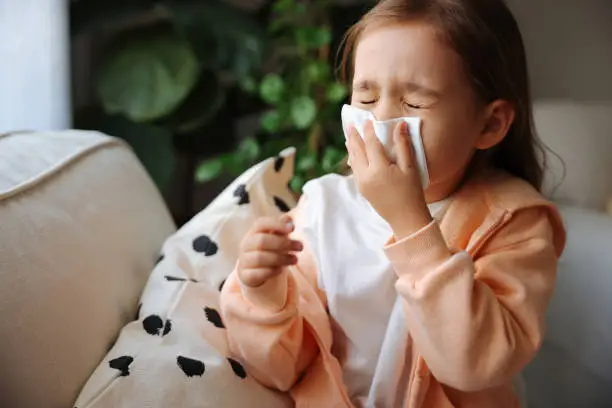We envision a world where everyone has the tools and knowledge to live a balanced, healthy, and fulfilling life. By providing reliable resources, personalized programs, and community support, we aim to be a beacon of hope for those on their health journey.
Table of Contents
Introduction to Climate Change and Health; Climate-Driven Disease
Climate change refers to long-term alterations in temperature, precipitation, wind patterns, and other elements of the Earth’s climate system. Driven predominantly by human activities such as fossil fuel combustion, deforestation, and industrial processes, climate change has emerged as one of the most pressing global challenges of the 21st century. Its repercussions extend far beyond environmental concerns, leading to significant implications for public health worldwide.
The interaction between climate systems and human health is complex and multifaceted. As the planet warms, we witness shifts in ecological patterns that can exacerbate existing health challenges and create new ones. For instance, rising temperatures can contribute to the proliferation of vector-borne diseases such as malaria and dengue fever, as warmer climates expand the habitats of disease-carrying organisms like mosquitoes. Additionally, extreme weather events, including hurricanes, floods, and droughts, can lead to direct injuries and prolonged stress on healthcare systems, disrupting access to essential medical services.
Furthermore, climate change influences air quality and the prevalence of allergens, leading to respiratory problems and cardiovascular diseases. The increased frequency of heatwaves can also result in heat-related illnesses and deaths, particularly among vulnerable populations such as the elderly and those with pre-existing health conditions. As weather patterns continue to evolve, the likelihood of food and water security issues rises, contributing to malnutrition and associated health problems.
Ultimately, understanding the connection between climate change and health is critical for developing effective strategies to mitigate its impacts. By acknowledging that these elements are intertwined, we better position ourselves to adapt to the shifting landscape of global health risks, thereby fostering a more resilient society in the face of climate change.
The Mechanisms of Climate Change Impacting Diseases

Climate change is intricately linked to the emergence and spread of both infectious and non-infectious diseases through a variety of mechanisms. One of the primary factors is temperature. Rising global temperatures can create favorable conditions for many pathogens and vectors such as mosquitoes and ticks, which are responsible for diseases like malaria and Lyme disease. These warmer climates may extend the geographical range and seasonal activity of these vectors, thereby increasing human exposure to diseases that were previously limited to certain regions.
Another significant factor influenced by climate change is precipitation. Changes in rainfall patterns can lead to flooding or drought, both of which can have profound effects on health. For instance, increased rainfall can create breeding grounds for mosquitoes, contributing to the higher prevalence of mosquito-borne diseases. Conversely, droughts can lead to water scarcity, which may trigger waterborne illnesses due to compromised hygiene and sanitation. Moreover, reduced water availability can affect food security, leading to malnutrition, which is directly associated with increased susceptibility to infections.
Humidity also plays a crucial role in disease transmission. Many pathogens thrive in humid conditions, and as regions experience shifts in humidity levels due to climate change, the likelihood of outbreaks can increase. Extreme weather events, such as hurricanes and heatwaves, can disrupt healthcare systems and access to essential services, further exacerbating the spread of diseases. For instance, during natural disasters, displacement and overcrowding in temporary shelters can facilitate disease transmission, including respiratory and vector-borne diseases.
Overall, the interplay of temperature, precipitation, humidity, and extreme weather events reflects a complex web of influences that climate change exerts on disease dynamics. Understanding these mechanisms is essential for developing effective strategies to mitigate the adverse health impacts associated with a changing climate.
The Rise of Vector-Borne Diseases
Vector-borne diseases, transmitted by living organisms such as mosquitoes and ticks, are experiencing a notable resurgence due to changing climate conditions. Climate change influences temperature and precipitation patterns, ultimately altering the habitats suitable for vectors and the diseases they carry. As global temperatures rise, regions previously unsuitable for these vectors are becoming fertile ground for diseases such as malaria, dengue, and the Zika virus.
For instance, malaria, traditionally prevalent in warmer climates, is now appearing in higher altitudes and colder regions, particularly in East Africa. A study by the World Health Organization (WHO) reported an increase in malaria cases in parts of the African highlands, typically over 1,500 meters above sea level, due to changing temperatures that allow the Anopheles mosquitoes, the primary malaria vectors, to thrive at these altitudes.
Dengue fever has also seen a significant geographical expansion. According to estimates from the CDC, the incidence of dengue has grown dramatically over the past few decades, with cases rising from 505,430 in 1990 to more than 5 million in 2019. This increase correlates with warmer nights and changing rainfall patterns, which create optimal conditions for Aedes aegypti mosquitoes, vectors for the dengue virus. Under climate models that project future warming, areas like Southern Europe and parts of the United States might become new hotspots for dengue transmission.
Moreover, the Zika virus outbreak of 2015-2016 highlighted the potential consequences of climate change on vector-borne diseases. The coinfection of Zika with ideal temperatures and increased rainfall contributed to its rapid spread. Experts warn that prolonged warm seasons may enable vectors to reproduce more quickly and expand their range, leading to new health crises.
As various regions on the globe are becoming increasingly susceptible to vector-borne diseases, understanding the intricate relationship between climate change and these ailments is essential for developing effective public health interventions and policies.
Impact on Waterborne Diseases
The interplay between climate change and the emergence of waterborne diseases is increasingly evident as shifting weather patterns contribute to altered water quality and availability. Warmer temperatures, altered precipitation patterns, and extreme weather events such as floods are exacerbating the risks associated with waterborne pathogens. Cholera, for instance, is a disease linked to contaminated water sources, primarily influenced by environmental factors. As global temperatures rise, regions that experience increased rainfall and flooding often find their water supply compromised, creating ideal conditions for the proliferation of harmful microorganisms.
Flooding, as a direct consequence of climate change, can overwhelm sewage systems and lead to the contamination of drinking water sources. In cities like Dhaka, Bangladesh, heavy rains and flooding have led to spikes in choleralike infections, showcasing the direct correlation between climate events and the emergence of waterborne diseases. Moreover, inappropriate management of sanitation facilities during such extreme weather events can facilitate the spread of illnesses like leptospirosis, which is contracted through contact with contaminated water or soil. In tropical areas, the frequency of leptospirosis cases has risen in response to increased flooding, highlighting a similar trend observed with cholera.
The quality of water is increasingly becoming a critical issue in the context of climate change. The rise in extreme weather events can damage water treatment infrastructures, resulting in untreated or poorly treated water entering local distributions. This presents a serious public health risk, especially in vulnerable communities. Continuous monitoring and connection between climate change and public health are necessary to address these emerging challenges effectively. Understanding the environmental influences on the spread of waterborne diseases is vital for strengthening our sanitary infrastructure and mitigating health risks in the face of climate change.
Respiratory and Allergic Diseases Due to Climate Change

Climate change has become an undeniable factor influencing public health, particularly in relation to respiratory and allergic diseases. One of the most significant outcomes of climate change is the increase in air pollution. Higher temperatures contribute to the formation of ground-level ozone, which aggravates asthma and other respiratory conditions. Research indicates that this heightened ozone level can lead to increased hospital admissions, particularly during warmer months when pollution levels peak. Furthermore, studies suggest that vulnerable populations, such as children and the elderly, are at a greater risk of experiencing adverse health effects due to deteriorating air quality.
Another crucial aspect of climate change is the alteration of pollen production and seasonality, which is directly affecting allergic diseases. As temperatures rise, the growing seasons for various plants are extending, leading to longer pollen seasons and increased allergen exposure. For instance, ragweed, a common allergenic plant, produces more pollen under elevated CO2 levels, exacerbating allergic rhinitis and asthma symptoms. This phenomenon has been documented in numerous studies, linking extended pollen seasons to a rise in allergy-related health issues. The implications for those suffering from asthma and allergies are significant, as prolonged exposure to allergens intensifies symptoms and increases healthcare interventions.
Additionally, the shifting climate influences the geographic distribution of respiratory pathogens, which can further complicate public health responses. In some regions, changes in precipitation and temperature are fostering environments conducive to the spread of diseases such as Valley fever and other fungal infections, presenting new challenges for healthcare systems. Therefore, understanding the interconnectedness of climate change and health is crucial in developing effective mitigation strategies. Addressing the root causes of climate change not only benefits the environment but also plays a critical role in safeguarding public health against respiratory and allergic diseases.
Mental Health Implications of Climate-Related Diseases

The interplay between climate change and mental health is an increasingly pressing issue that requires comprehensive examination. As climate-related disasters such as floods, hurricanes, and wildfires become more frequent and severe, they directly impact individual mental well-being. The psychological consequences of these events are profound, leading to heightened levels of anxiety, depression, and post-traumatic stress disorder (PTSD) among affected populations.
Research indicates that individuals who experience climate-related disasters are at greater risk for developing mental health conditions. This vulnerability is often exacerbated by the loss of homes, livelihoods, and a sense of community. The trauma associated with such disasters can lead to a pervasive sense of helplessness and fear, further complicating recovery efforts. It is not only the immediate aftermath that poses a threat to mental health; ongoing anxiety about future climate events—or the gradual loss of environmental stability—can lead to chronic stress conditions.
The psychosocial aspects of health in the context of climate change cannot be understated. Affected communities may face social isolation, stigma, and economic hardship, all of which contribute to deteriorating mental health. Furthermore, the emerging diseases connected to a changing climate—such as vector-borne illnesses—add another layer of concern. The fear of these diseases can lead to increased anxiety and mental distress, particularly in vulnerable populations lacking adequate resources for both physical and mental health care.
In addressing the mental health implications of climate-related diseases, it is crucial to integrate mental health support into disaster preparedness and recovery plans. This may involve fostering community resilience, providing psychological first aid, and ensuring access to mental health services in the wake of disasters. By acknowledging the intersection of climate change and mental hea-lth, we pave the way for more comprehensive strategies aimed at enhancing overall community well-being in a shifting global landscape.
Socioeconomic Factors and Vulnerability
The relationship between socioeconomic factors and vulnerability to climate-related diseases is complex and multifaceted. Individuals with lower socioeconomic status often face significant barriers to healthcare access, limiting their ability to seek treatment or preventive measures. These barriers can include financial constraints, lack of insurance, and inadequate transportation options to healthcare facilities. Consequently, populations in lower socioeconomic brackets may be at a heightened risk for diseases exacerbated by climate change, such as heat-related illnesses, vector-borne diseases, and respiratory issues stemming from poor air quality.
Access to healthcare is not solely determined by economic factors; it also encompasses the availability of local hea-lth services. Communities with limited healthcare infrastructure often struggle to address the specific hea-lth threats posed by climate change. For instance, rural areas or marginalized urban neighborhoods may experience shortages of medical professionals, leading to delayed diagnoses and inadequate treatment for diseases that thrive in changing environmental conditions. This inequitable access contributes to a disparity in health outcomes, with those in vulnerable communities suffering disproportionately from climate-related hea-lth issues.
Moreover, community resilience plays a crucial role in determining how populations cope with climate-related hea-lth risks. Resilient communities tend to possess strong social networks, effective local governance, and participatory hea-lth initiatives, which can mitigate the impact of environmental stressors. Conversely, communities lacking such resources may experience a breakdown in social cohesion, making collective responses to hea-lth crises more challenging. This vulnerability can be particularly pronounced among certain demographic groups, such as the elderly, children, and individuals with pre-existing hea-lth conditions who are often less equipped to adapt to changing circumstances.
In summary, the interplay between socioeconomic status, access to healthcare, and community resilience significantly shapes the vulnerability of populations to climate-related diseases. Addressing these disparities is critical for enhancing public hea-lth responses and developing equitable interventions to protect at-risk communities from the evolving threats posed by climate change.
Global Responses to Climate-Induced Health Challenges
As the effects of climate change intensify, a range of global strategies has been developed to mitigate hea-lth impacts that arise from this pressing issue. Acknowledging the correlation between climate change and hea-lth, international organizations, governments, and hea-lth agencies are increasingly prioritizing public hea-lth initiatives aimed at addressing these challenges. One significant aspect of this response is adherence to international hea-lth regulations which foster coordinated actions across borders to combat climate-related hea-lth risks.
For instance, the World Health Organization (WHO) has established frameworks that guide member states in assessing their vulnerabilities to climate change and preparing adequate responses. WHO’s Climate Change and Hea-lth Strategy encourages countries to integrate climate considerations into public hea-lth policies, ensuring readiness for the adverse hea-lth effects precipitated by climate variations. This encompasses enhancing surveillance systems, improving access to clean water, and boosting public hea-lth education to foster resilience against climate-induced diseases.
Moreover, public hea-lth preparedness is essential in addressing the urgency and complexity of climate change impacts. Countries are encouraged to invest in robust healthcare systems capable of coping with increased disease incidence linked to climate shifts, including vector-borne diseases that proliferate in warmer climates. In addition, training for healthcare professionals on identifying and managing climate-related hea-lth issues is becoming increasingly relevant.
Furthermore, partnerships between governments, non-governmental organizations, and the private sector play a vital role in developing comprehensive responses to hea-lth challenges associated with climate change. Collaborative efforts focus on research initiatives aimed at understanding the intricate dynamics of climatic influences on hea-lth and developing innovative interventions. This multifaceted approach underscores a unified commitment towards mitigating the threats posed by a changing climate on global hea-lth, thus fostering a healthier future for the world.
Conclusion and Call to Action
The profound relationship between climate change and global hea-lth has become increasingly evident through various studies and observations. As we have discussed, rising temperatures, shifting weather patterns, and extreme weather events are contributing to a changing global disease map. Emerging infectious diseases, changing vectors, and a rise in chronic hea-lth conditions are just a few of the alarming effects of climate change on public hea-lth. Furthermore, vulnerable populations are disproportionately affected, amplifying existing hea-lth disparities and emphasizing the urgency of addressing these issues.
Given the substantial evidence pointing to the hea-lth implications of climate change, it is clear that immediate action is required. Policymakers, hea-lth professionals, and the public must come together to create and support initiatives targeting both climate change mitigation and public hea-lth enhancement. Individual actions, such as adopting sustainable practices, reducing waste, and advocating for greener policies, play an essential role in combating the health consequences associated with climate change. By understanding how our choices impact the environment, we can make informed decisions that contribute to the overall well-being of our communities.
This call to action extends to supporting hea-lth initiatives aimed at educating the public about the intersection of climate change and hea-lth. Advocacy for research funding and preventative strategies can help prepare us for the challenges ahead. Additionally, engaging in community-centered activities that promote sustainability can foster a collective response to these pressing issues. As concerned global citizens, it is our responsibility to confront the hea-lth impacts of climate change head-on. By taking actionable steps, we can not only safeguard our hea-lth but also protect the hea-lth of future generations.





